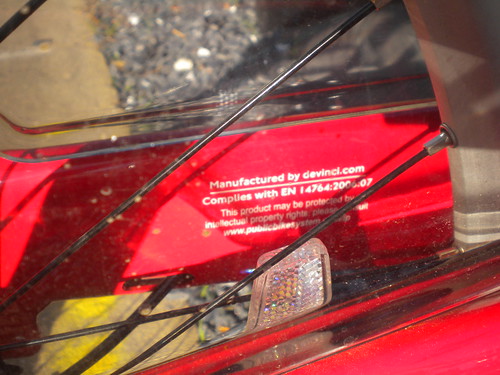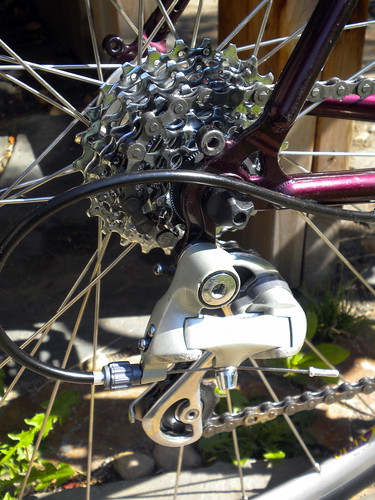I now subscribe to three biking magazines, of varying quality, with different audiences and "tone."
Bicycling is an obvious choice and the one I have subscribed to the longest. One could suggest that they try to be all things for all (cycling) people, but they avoid too much discussion of technical issues. There are always articles for beginners ("5 Rookie Maintenance Mistakes" and the like) with "lifestyle" pieces (diet, complimentary exercise programs) and human interest articles of various levels of interest and perhaps even appropriatness. The biggest draw for me ends up being information about new products and bikes, much of which is in highly abbreviated form, which means if something seems interesting I generally have to do follow-on research. The reviews, particularly of bikes, take great care not to offend the manufacturers who of course are also big sponsors. One has to learn to read carefully to know when they aren't very impressed with a bike since serious direct criticism is so muted.
One aspect that I find trying in
Bicycling bike reviews is the use of various shorthand that mostly includes no explanation of what they mean by these terms. It's a "you can't have it both ways" sort of problem - by avoiding highly (of even vaguely) technical explanations of most everything, they are left with buzz phrases. (One exception are quotes from the company PR people, such as "the carbon fiber in the new XYZ is extruded by robot in Germany, then blah blah blah, resulting in the stiffest yet most compliant ride we've ever produced." Gibberish, in other words.)
Bicycle Times is a relatively new publication. The web site says, "Featuring the best inspirational stories, practical advice, and intelligent discourse from everyday riders, but with a focus on the pavement side of things." Since the same outfit publishes a separate mountain biking mag, that is out of scope - mostly this is about "urban biking" with commuting and "bike culture" both featured. Road racing is not a featured subject. The bike and other reviews are generally more detailed and more inclined to make technical points in a comprehensible and useful way. Sometimes there are even links to further background information - for example, a comment about a particular bike's "trail" has a URL/link to further background on this subject. Good.
Bicycle Quarterly, according to its web site, is a "magazine for discerning cyclists, who enjoy their bikes, whether on a weekend ride, commuting, randonneuring, racing or touring the countryside." Its main focus is on randonneuring and the history of randonneuring and it works out from there to topics such as racing (and racing isn't really much of a focus). Most of the writing is by the editor/publisher, Jan Heine. There is a lot of good technical information or anyway discussion of issues, but some of the research presented seems less than rigorous. The magazine's apparent editorial view is that many assumptions about how best to achieve bicycle design objectives are incorrect; for example, that achieving high speed on a bike is best accomplished with fatter tires and lower tire pressure, not narrow and high. There is something to this, but not (I think) to the degree BQ suggests. BQ also seems to feel that it's competition doesn't do very good work, for example saying, "Our detailed evaluations are based on weeks of riding in challenging terrain, not just a spin around the neighborhood." Because of the abbreviated format used,
Bicycling doesn't talk about how much the bikes are ridden when reviewed, but it is pretty obvious it is much more than "a spin around the neighborhood." One detects self-righteous indignation.
BQ does get points (with me) for being very open about criticisms of bikes reviewed where they find problems. One reason is that where there are substantive problems described, the company is asked to make a statement and these are inserted in the articles.
BQ isn't a high budget publication, so reviews are limited in number and often are driven by someone loaning the publication a bike to be reviewed. This sometimes has funny outcomes - a Civia was reviewed with much criticism; the company response was that they had stopped making the thing, rendering the review pointless for the most part, but having made the effort, this small publication could hardly throw it out, it would seem.
Another oddity is that BQ doesn't have most of its content on its web site, although they do have present their photographs in color, which is good since the publication itself is B&W. And in fact the photographs are quite nice; Heine also published coffee table books about the history of cycling that are beautiful.
In the end BQ is an acquired taste that some folks may not acquire.



